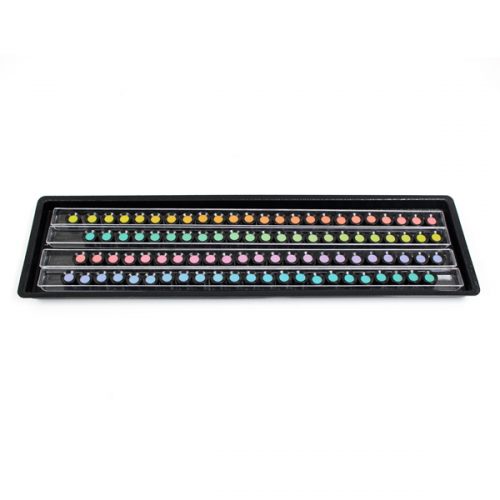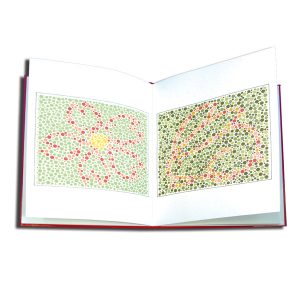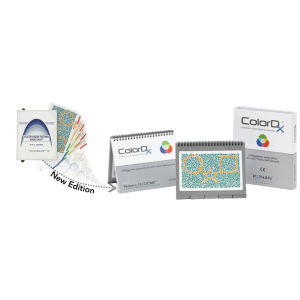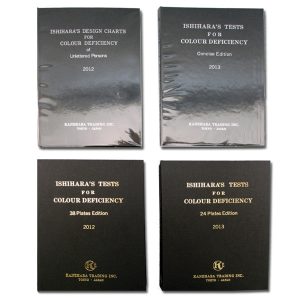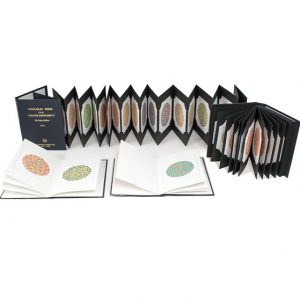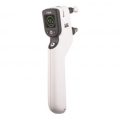The Farnsworth-Munsell 100 Hue Color Vision Test contains four distinct rows of similar color hues, each containing 25 distinct variations of each hue. Each color hue at the polar end of a row is fixed in position, to serve as an anchor. Each hue tile between the anchors can be adjusted as the observer sees fit. The final arrangement of the hue tiles represents the aptitude of the visual system in discerning differences in color hue. Failures within the observers visual system can be measured as a function of two factors contained within the test; either the amount of instances that a tile is misplaced, or the severity of a tile displacement (i.e., the distance between where a tile should have been placed and where it was actually placed.)
The tiles are arranged in four rows based on color hue. The rows cover orange/magenta hues, yellow/green hues, blue/purple and purple/magenta hues, in that order. The physical derivative of the test is given on a black background to isolate and accentuate color hues, which are round and roughly an inch in diameter. The digital derivative of the test is based on square hue images, which are also presented on a black background, but can vary in size based on monitor, resolution, zoom and a variety of other external settings and variables. The digital distribution of the 100 Hues test is far more popular given its easy access for little or no licensing fee, and an apparent level of accuracy for most audiences. )
100 Hue Test comes boxed in clear acrylic containers which make scoring easy and reduces the potential for test disruption by holding the patient’s disc sequence intact.

